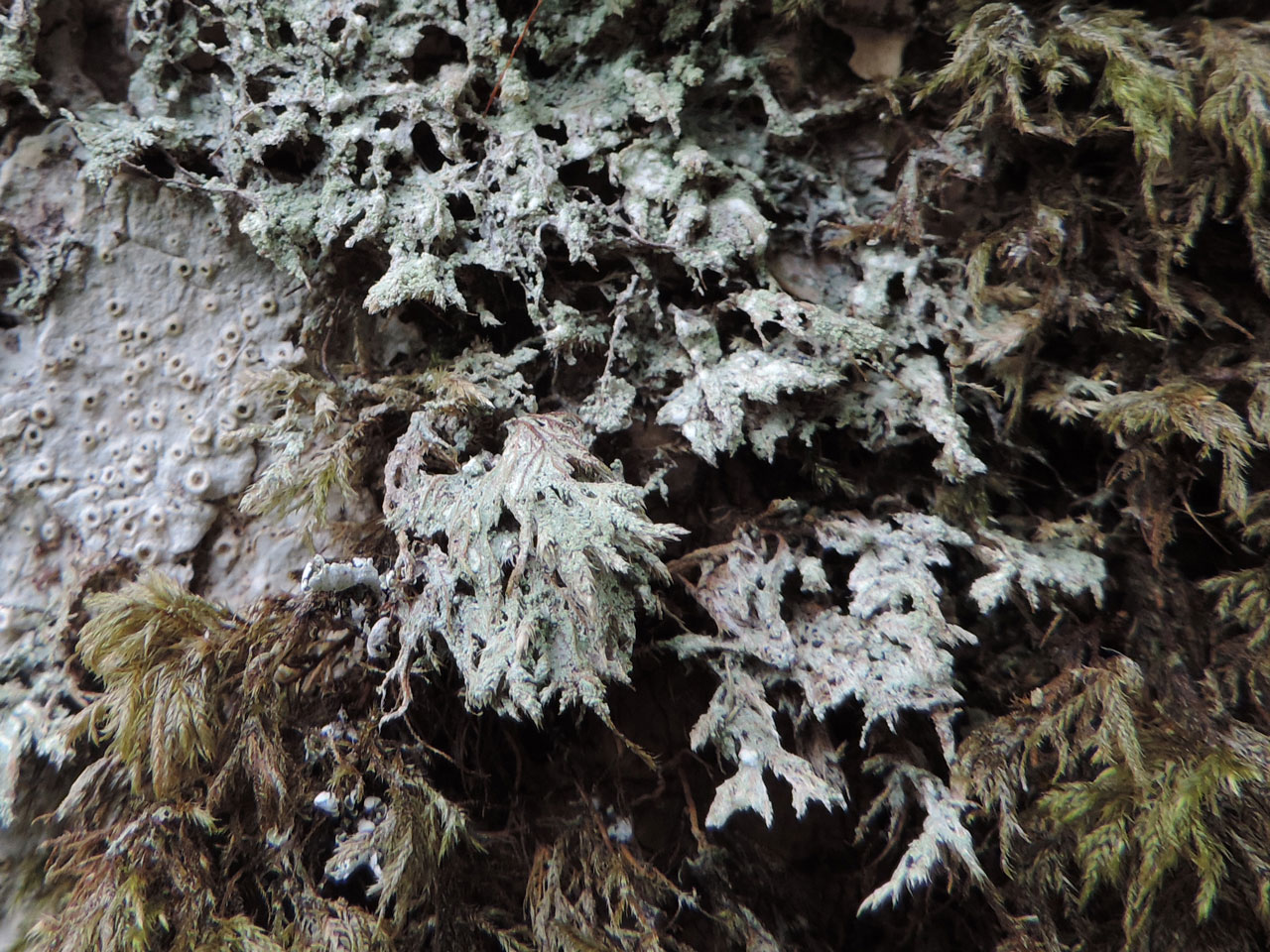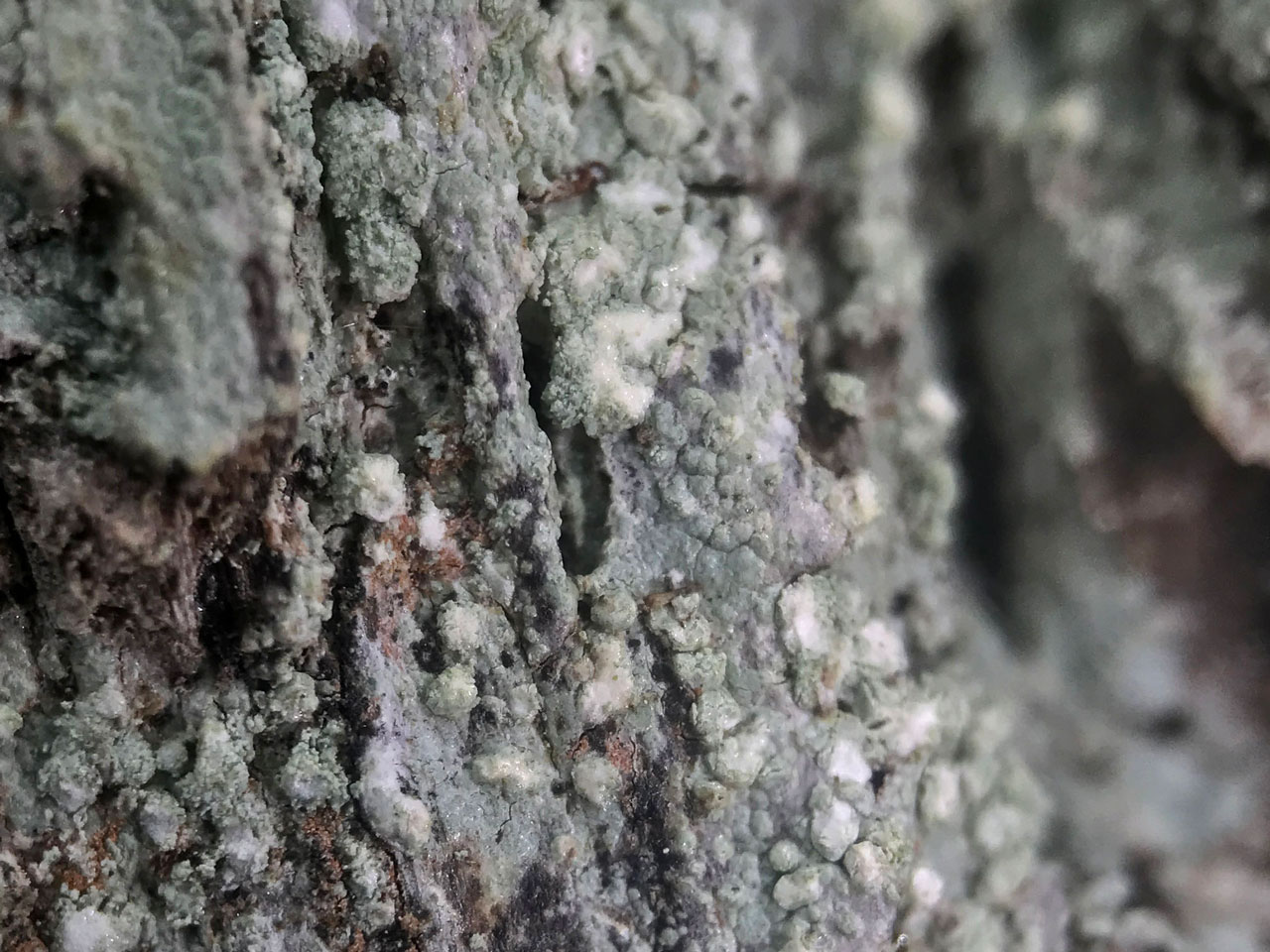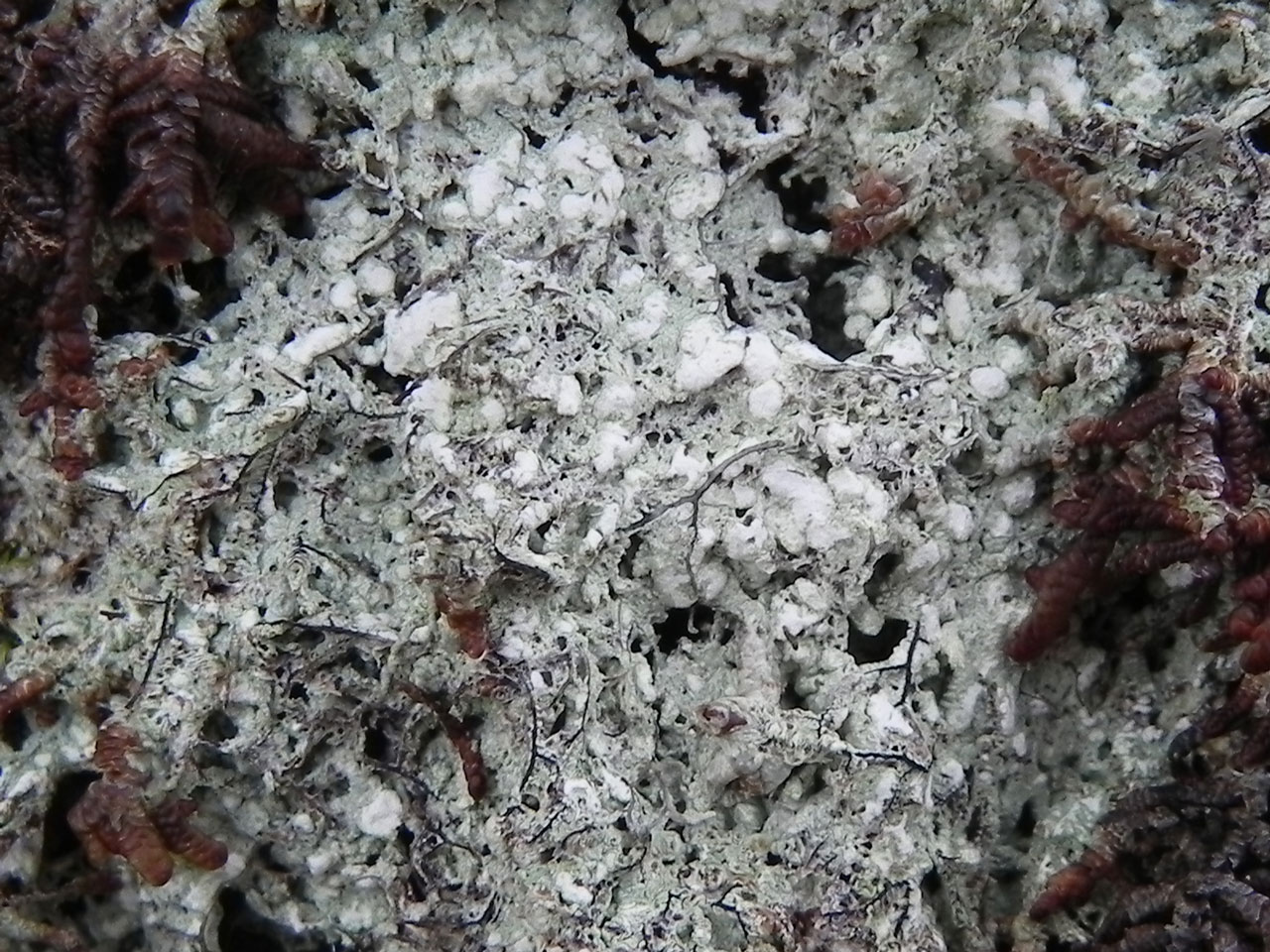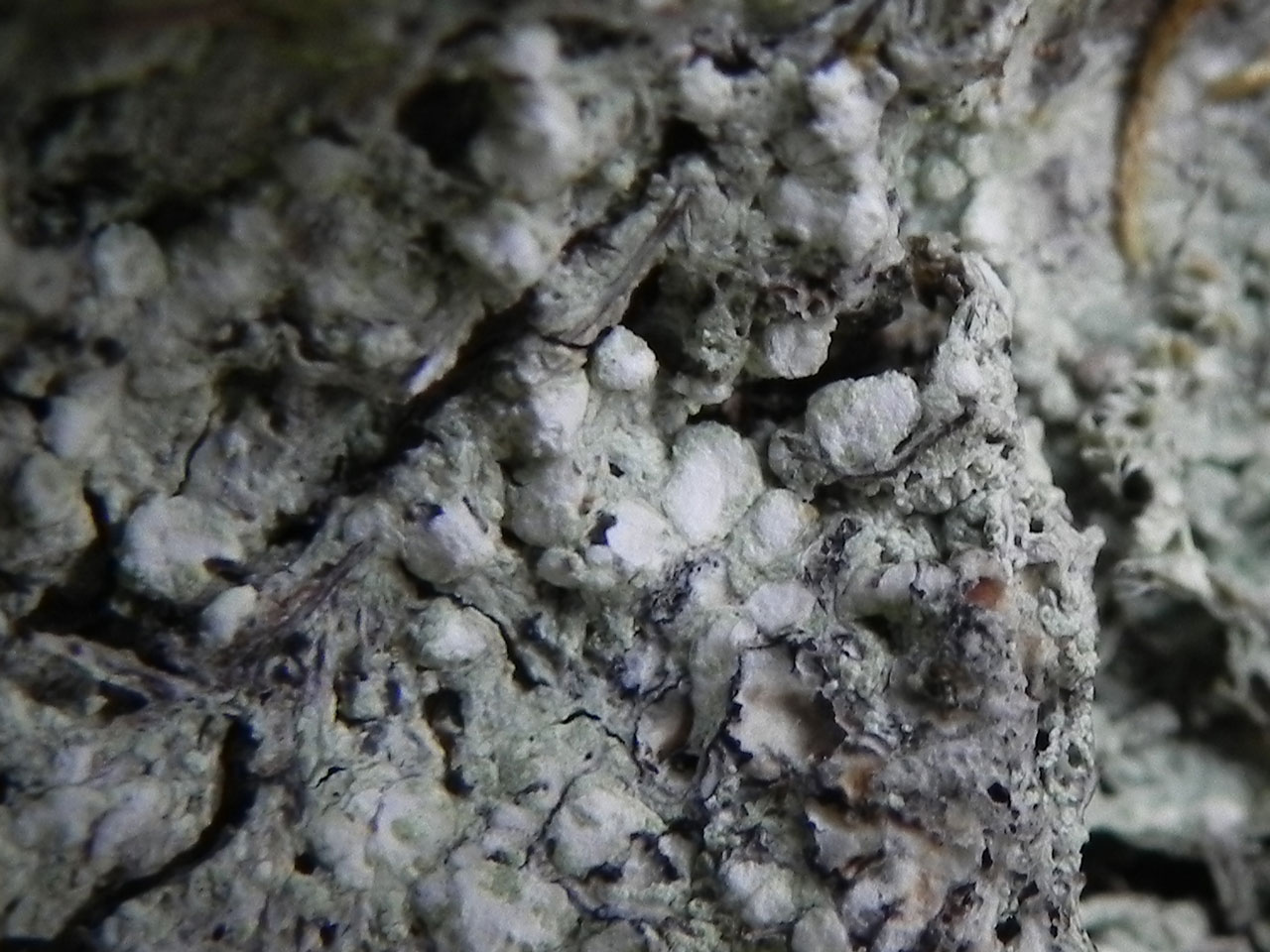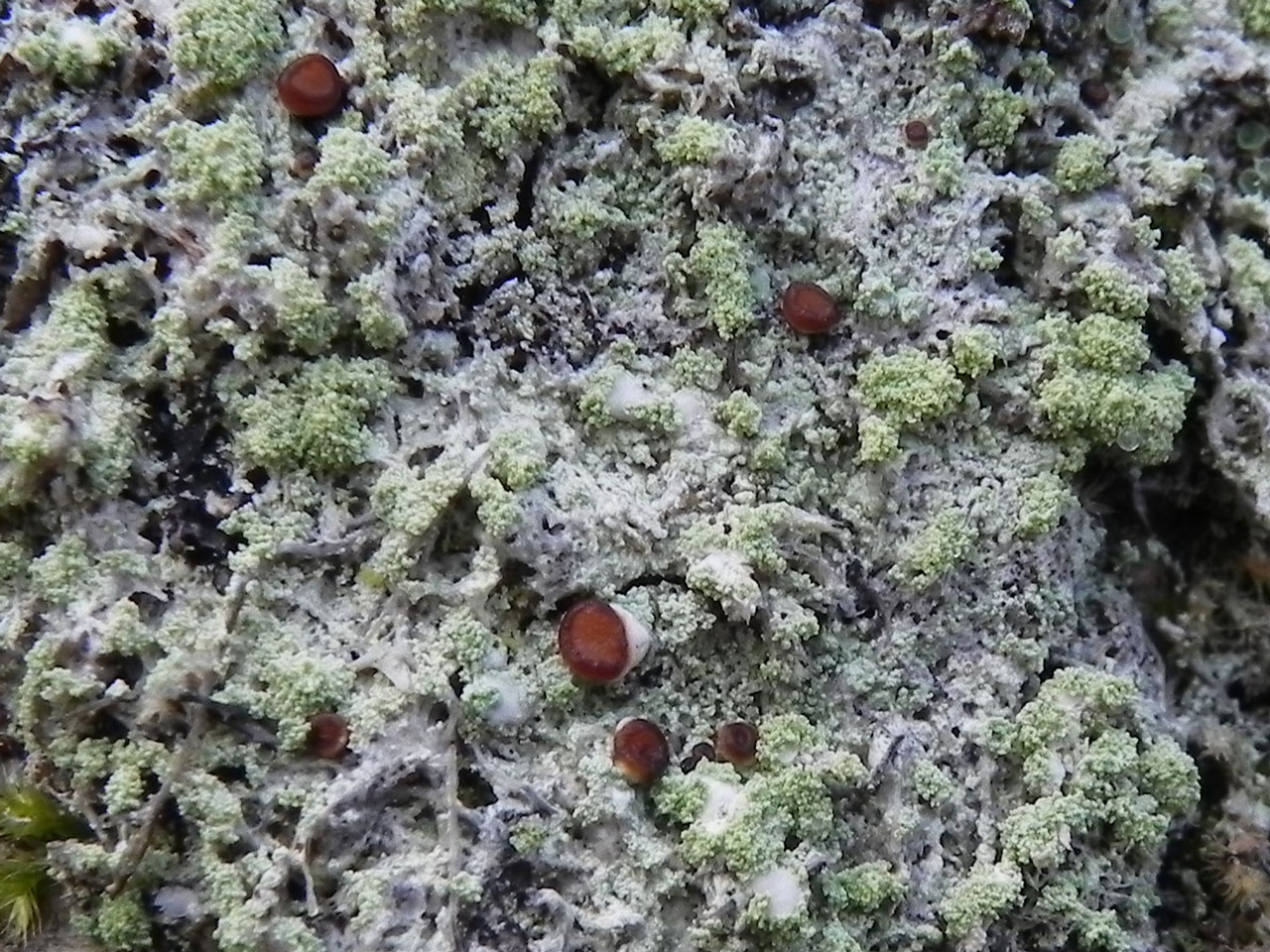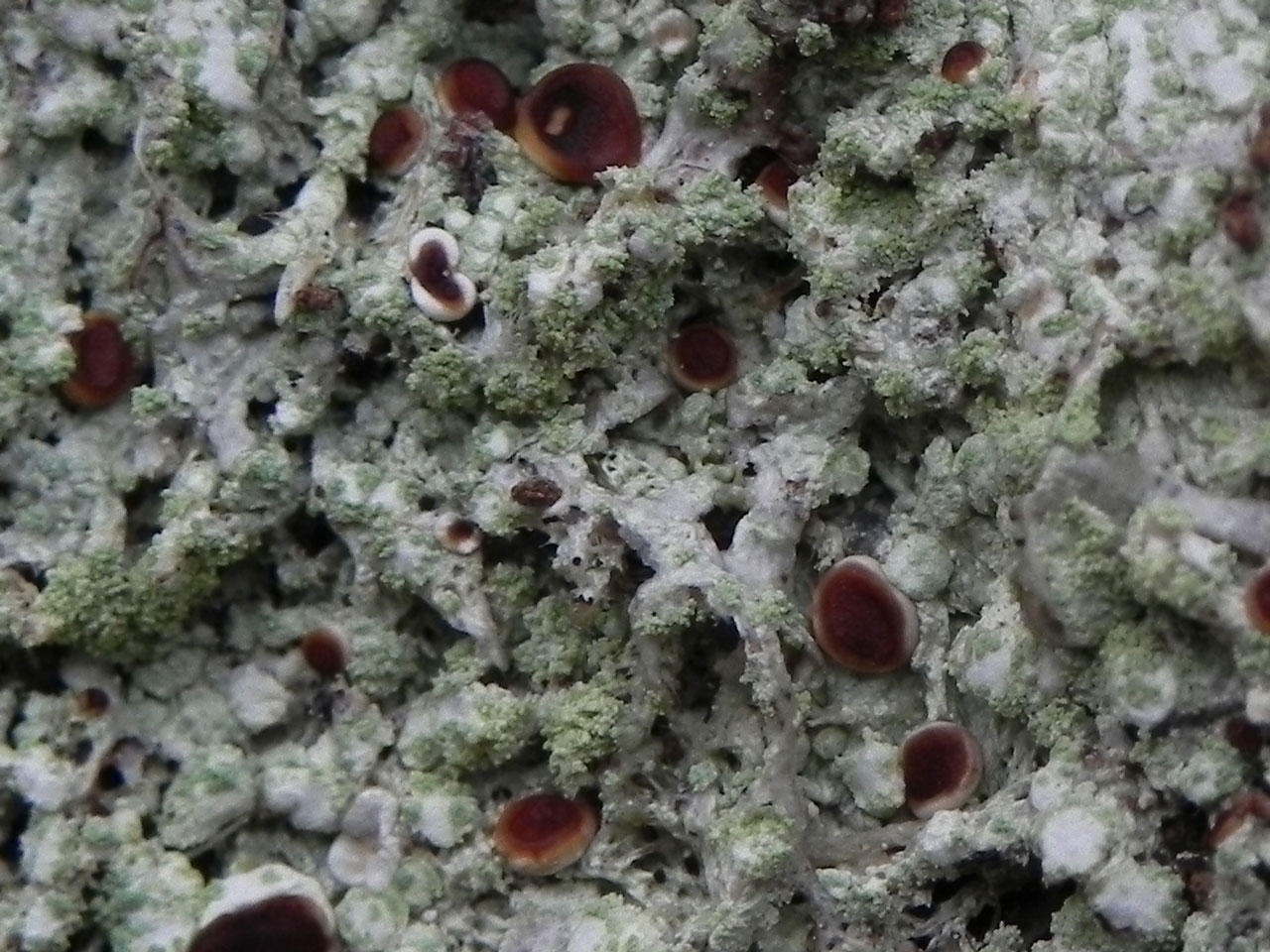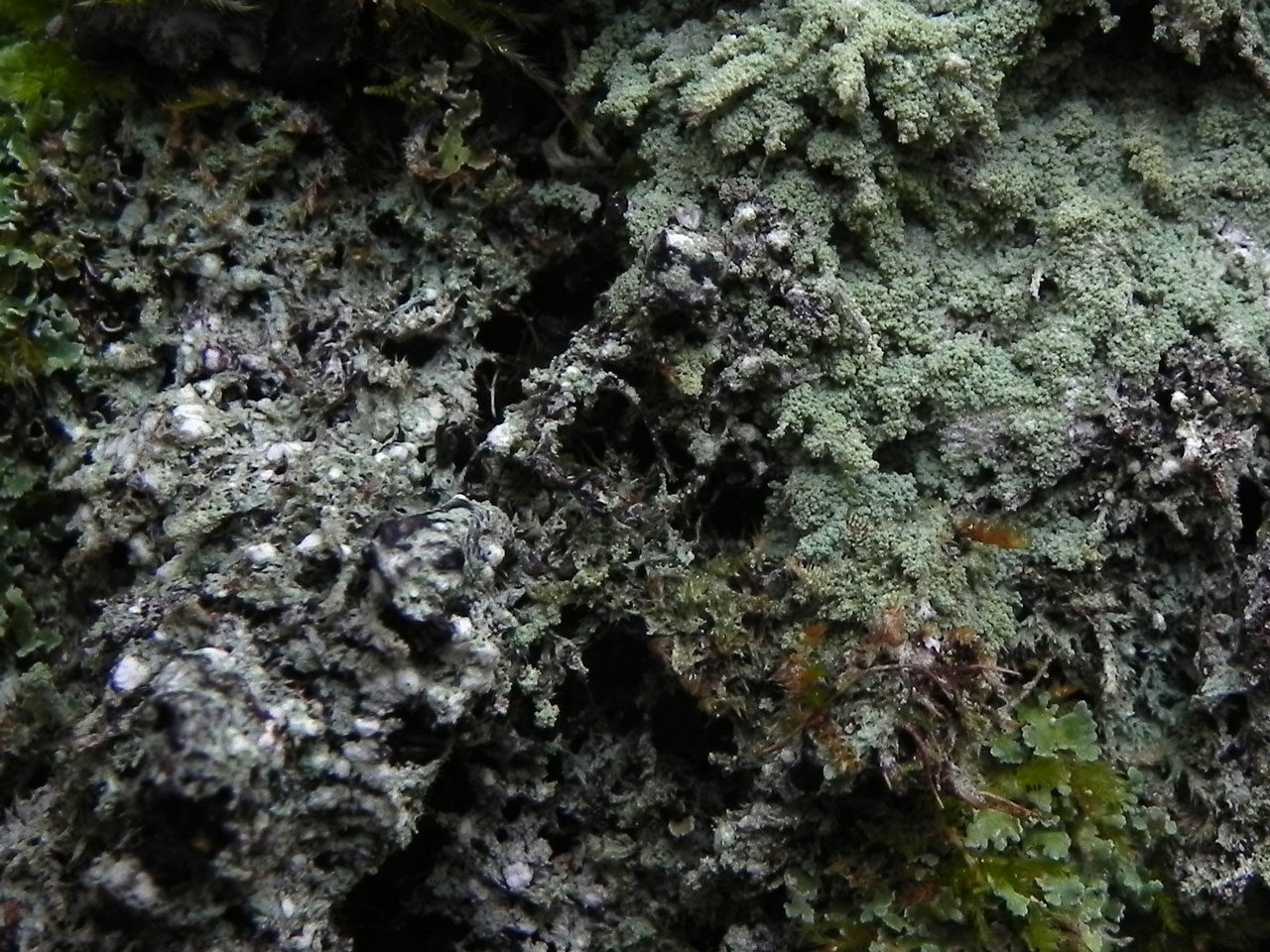Found mainly in old growth oceanic woods, very rarely on mossy rocks coastal sites. A magnificent and unmistakable lichen when fertile, with a chestnut shining disk and persistent margin that can be paler. The species however, is very rarely fertile, and is then rather difficult to spot and identify. It can have the general appearance of sorediate Lepra or Ochrolechia species and has been confused with Phyllopsora rosei and Megalaria pulverea. Spot tests will separate most look a likes, but Pd– forms of M. pulverea have been particular troublesome. A positive K/UV (dry) + bright neon yellow spot test for atranorin, however, will definitively separate Pd– M. pulverea in this situation. Where present, the paler corticate tubercles (appearing like “bald heads”) on the pale green-grey thallus are very distinctive but are absent in fully granular specimens.
Thallus 0.05–0.15 mm thick, effuse, soft, filmy to powdery-granular, yellow or pale green-grey; prothallus absent or smooth, blue-black; thalline granules diffuse to aggregated, partly corticate initially and later disintegrating, greenish or glaucous blue-grey to yellow-grey, breaking down into irregular clusters of yellow-green to grey, soon confluent and Lepraria-like soralia, which may cover most of the thallus or remain as decorticate, convex tubercles to 1–2 mm diam. Apothecia extremely rare (only recently seen from Somerset and Argyll in Britain and Co. Mayo in Ireland), rounded, flat; disc 0.5–2.0 mm diam., chestnut- to dark reddish brown, shining; margin ( exciple) persistent, paler or concolorous with the disc; epithecium densely granular, the granules not dissolving in K; hymenium 130–180 μm tall, densely inspersed with oil droplets. Asci 1-spored. Ascospores 70–140 × 25–35 μm, 5- to 11-septate, the wall ca 2 μm thick and septa ca 0.5 μm thick. Thallus C–, K+ pale yellow, KC+ yellow, Pd–, UV– (usnic acid, zeorin, range of terpenoids, unknown UV+ blue).
Fertile material is unmistakable having very large, 5- to 11-septate, thick-walled spores. Usually sterile and has then been confused with Phyllopsora rosei, which is Pd+ orange-red, K– (argopsin) and has scale-like flattened minute pubescent granules on an arachnoid prothallus. Old dried specimens become more glaucous and are covered in minute, needle-shaped crystals. The thallus of Biatora vernalis is not green-yellow and it is K–. M. tuberculosa may resemble Ochrolechia or Pertusaria s.l. (mainly Lepra sp) or even Lepraria when vigorously spreading over mosses. When sterile, well-developed thalli of Megalaria pulverea are very similar; these are usually Pd+ red, but Pd– forms are not uncommon. They can be separated by these giving the K/UV (dry) + bright neon yellow spot test for atranorin. Where present, the paler corticate tubercles (appearing like “bald heads”) on the pale green-grey thallus are very distinctive but are absent in fully granular specimens.
On bark of broad-leaved trees, especially Oak, Beech or Ash, in sheltered, humid but well-lit glades in ancient wooodlands, also on mossy rocks and on the ground in coastal sites.

Rather rare and some older records are very likely errors for Pd– Megalaria pulverea. In oceanic areas in S. & W. Britain, north to Skye; W. Ireland.
Recently surveyed populations trend to be small, with only a few trees found per wood, but past confusion with other species makes population trends difficult to estimate. Local losses to tree death have been recorded and the species is vulnerable to in creased shade from vegetation over growth due to the loss of extensive grazing in pasture woodlands. Ash Die Back is a regional threat, especially in Scotland. The assessment as Near Threatened in 2012 is now likely to be an under estimate of the threat.
Britain: Near Threatened & an International Responsibility Species.
Scotland: Priority Taxon for Biodiversity in Scotland
Wales: Vunerable & Section 7 species
England: Section 41 species
Cannon, P., Arup, U., Coppins, B., Aptroot, A., Sanderson, N., Simkin, J. & Yahr, R. (2024). Teloschistales, including Brigantiaea (Brigantiaeaceae), Megalospora (Megalosporaceae) and Amundsenia, Athallia, Blastenia, Calogaya, Caloplaca, Cerothallia, Coppinsiella, Flavoplaca, Gyalolechia, Haloplaca, Huneckia, Kuettlingeria, Leproplaca, Marchantiana, Olegblumea, Polycauliona, Pyrenodesmia, Rufoplaca, Rusavskia, Sanguineodiscus, Scythioria, Solitaria, Squamulea, Teloschistes, Variospora, Xanthocarpia, Xanthomendoza and Xanthoria (Teloschistaceae). Revisions of British and Irish Lichens 43: 1–75.
Text by Neil A Sanderson based on Cannon et al (2024)

